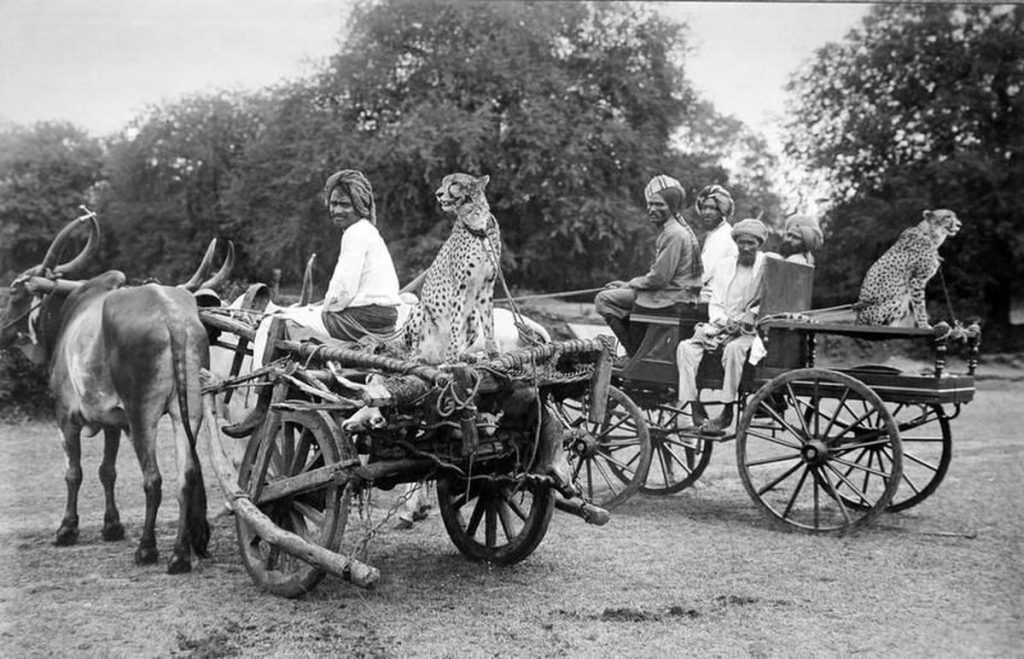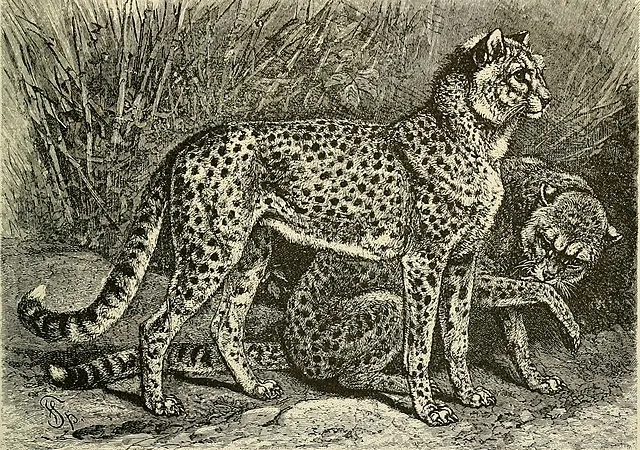Cheetahs – the much Treasured, Fastest Moving Mammal on Land
Cheetahs have endured years of evolution and emerged as a much adored species world wide. Its challenging evolutionary history has resulted in a distinctive, speed-focused physiology. Fossils of the cheetah (Acinonyx) were discovered in America, Europe, Asia, and Africa approximately 4 million years ago. Other related species were also tracked.
The cheetah survived extinction in the Pleistocene due to a founder effect that occurred approximately 100,000 years ago. This left the species with fewer individuals and less genetic diversity.
- Founder Effect: In population genetics, the founder effect is the loss of genetic variation that occurs when a new population is established by a very small number of individuals from a larger population. It was first fully outlined by Ernst Mayr in 1942, using existing theoretical work by those such as Sewall Wright. (source: Wikipedia)
People have admired and treasured cheetahs for 5000 years in Asia, Europe, and Africa, and human infatuation with the animal has led to the species’ near extinction.
The term “cheetah” was first recorded in usage in 1610, but it wasn’t until Johann Christian Daniel von Schreber, a German naturalist, published the first description of the species in 1775. At the time, the animal was widely distributed throughout Asia and Africa.
Cheetahs in India – A Historical Account

In India, cheetahs were valued as hunting companions, and in Hindi, they were known as “Chita” or the “spotted one” and frequently called “hunting leopards.”
This fastest moving animal on land was caught and tamed. They were then, trained to act as an instrument of shikar (hunting). They were an integral part of the Maharajas hunting teams.
This put pressure on the wild cheetah populations, which led to their decline and eventual extinction in India.
The cheetah’s historical range in India covered the entire country, with the exception of the high mountains, the coast, and the northeast; from the west of Bengal in the east, to Afghanistan and Iran in the west, and from the north of Punjab to the west, of the northwestern Tamil Nadu in the south.

In 1613, the Mughal emperor Jahangir formally recorded what is known to be the first instance of a cheetah bred in captivity in the world, for the purpose of game sport/hunting. This is considered the first captive breeding of a cheetah. Over the years, cubs were repeatedly caught in their natural habitat and subsequently domesticated for sport, causing a big blow to the Cheetah population in the wild.
The Mughal King Akbar took a cheetah named Chitr Nanjan for a hunting trip around Jaipur and was so impressed by the animal’s performance that he ordered it be given a jewel studded collar and Chitr Nanjan was honoured with drum beats.
Some records have shown that Akbar collected 9,000-10,000 cheetahs during his reign from 1556 to 1605.
One of the main causes that led to this regal cat becoming extinct in India was due to the large scale capturing of this mammal from the wild for game sport hunting including substantial habitat modification that led to loss in the prey base.

Three male Asiatic cheetahs, the last of the ones left in the wild, were shot in the Sal forests of Koriya District, Chhattisgarh State, in 1947, by Maharaja Ramanuj Pratap Singh Deo. Though there were some intermittent, unconfirmed reports later from the central and Deccan regions ever since.
This regal cat, with the most graceful strides (Asiatic Cheetah); occupies a wonderful place in the history of mankind. Now just found in Iran, and due to concerted conservation efforts just 12 individuals are remain in the wild.
Lost to trophy hunting and gaming In India, yet a species that tried to survive in the unbridled, thriving wilderness of the Indian landscape in the rich, historical past. We can only hope that someday the reintroduction efforts in the Indian subcontinent help revive this precious species, giving them a fresh lease of life and a landscape that they can once again call home.
Feature Image Credits: Brehm’s Life of animals – a complete natural history for popular home instruction and for the use of schools (1895), Wikicommons
Written by: Gaurav Dhotre, Naturalist, Waghoba Eco-Lodge and Natasha Sinha, Content Curator

